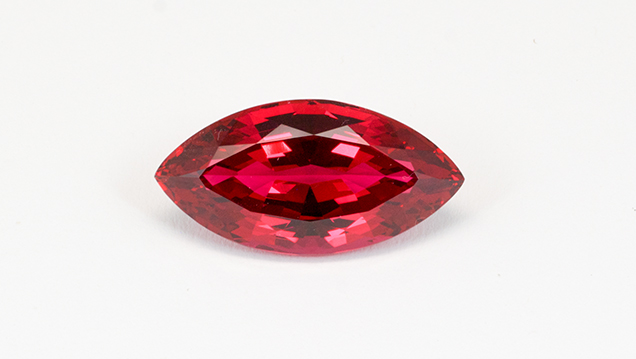Exceptional Red Spinels and Fine Aquamarine

According to Henn, this gem was from a find of three exceptionally large spinel crystals (one larger than 50 kg) recovered from a dried riverbed in the mid-2000s. Henn heard of the discovery through a local Tanzanian contact. The crystals needed to be hammered and trimmed, but they still produced cuttable rough of significant size, including a suite of gems totaling 174.58 carats. In his opinion, the 61.29 ct marquise is the finest of the lot.
This is likely the same discovery as the widely reported 2007 recovery of four giant spinel crystals weighing 52, 28, 20, and 5.7 kg from a zone in the Ipanko ruby and spinel mining area known as the “Joel Box.” Reported as having a “vibrant orangy, pinkish red color,” the largest crystal was broken up for transportation away from the mining area. The outside portions of crystals had some superb cuttable material, but the cores were mostly lower quality. Although the eventual yield was said to be as low as 3%, the crystals had the potential to produce many thousands of carats of cut gems, including significant pieces of over 50 ct. The 61.29 ct marquise is likely part of this yield.
Henn also displayed a superb 450.08 ct rectangular (corners-on) step-cut aquamarine (figure 2). This gem possessed the coveted pure blue “Santa Maria” color, with no hint of green or yellow (this name refers to a mine near Santa Maria de Itabira in Minas Gerais, Brazil). The gem was of stunning clarity—this cutting style is very revealing of any imperfections—and was fashioned from rough recovered in 1927. Henn said he purchased the rough from an “old gemstone family,” and it had been “kept in the basement” for generations.

Figure 2. Among the many fine aquamarines at Axel Henn’s booth, the standout was this 450.08 ct square step-cut gem. Photo by Duncan Pay/GIA; courtesy of Henn Gems.
.jpg)


